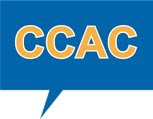A look back at 2015
2015 saw a lot of accessibility advocacy around subtitles/captioning and audio description with some great victories. This is by no means a complete list but it does summarise some of the highlights for me.
Amazon Instant Video UK finally started added subtitles to their VOD service after some great advocacy which had its origins in the Love Subtitles campaign. In 2014, there were no subtitles at all, and by the end of 2015, approximately 50% of its content is subtitled (see ATVOD report detailed later in this article). Let’s hope that percentage figure continues to rise in 2016 .

Marvel’s Daredevil on Netflix
Netflix US / UK found itself the target of an advocacy campaign to add audio description to its content after it released an original series about a blind superhero Daredevil based on the Marvel comic book character of the same name without making it accessible to blind and visually impaired viewers. Thanks to the efforts of The Accessible Netflix Project, there was a pretty fast response from Netflix in releasing audio description tracks for this series and more on its platform.
The Action On Hearing Loss #SubtitleIt! campaign succesfully obtained a public comittment from Sky that it would increase the amount of subtitled VOD content on it’s services by summer 2016 following a petition from Jamie Danjoux. I think a lot of people will be watching this one closely and look forward to seeing the comittment being met in 2016.
All of these campaigns are far from over and many are continuing their advocacy into 2016. The #SubtitleIt campaign just published a useful summary of ATVOD’s final report (before being taken over by Ofcom) into the Provision of Access Services published at the end of 2015.
There were many other interesting publications around accessibility in 2015:
- Action on Hearing Loss published the results of its survey into the state of VOD accessibility in the UK called Progress On Pause.
- RNIB published the results of trial involving blind and visually impaired members using an audio description app called MovieReading.
- Stagetext published the results of its research and development using new technology called CaptionCue to produce live captioning of live theatre performances.
- BBC R&D published a whitepaper on Responsive Design for Personalised Subtitles.
- HBB 4 All published its report into New approaches to Improving the Quality of Media Accessibility Services on HbbTV.
- Ofcom published its final 4th report into measuring the quality of live subtitling on live TV. Amongst a wealth of statistics was an interesting snippet of information about a possible technical solution for some live UK TV channels and live subtitling latency. A solution referred to as using ‘switchable delays’. I have been lucky enough to see a clip of this from tests and the results do indeed look very promising so I hope that this will be implemented.
There were many other successful advocacy and awareness campaigns in 2015.
I had great fun taking part in the UK’s first #CAPaware week launched by Stagetext to celebrate its 15th birthday which amongst many activities that week included tweeting alongside watching a captioned play from Digital Theatre.
Turn On The Captions Now was a campaign that successfully passed a local city law in Portland, Oregon USA which states that all public televisions in public areas such as bars and restaurants must have closed captioning switched on. The Portland: Turn On The Captions Now! group have since published a website that includes instructions for turning on closed captions and advice for Portland residents on how to request captions if they spot non-compliance.
American Airlines showed everyone how not to respond to a query on social media to a request for closed captioning to be made available on their in-flight entertainment. It lead to a Twitter campaign with the hashtag #DeafInTheAir
But it wasn’t just airlines, Braam Jordaan was successfull in getting the White House to make its video content accessible with a campaign predominantly on Twitter using the hashtag #WHccNow
In fact it seems when it comes to social media, (whisper it carefully, I don’t want to jinx it) but it seems that the knowledge that subtitling and captioning your video media leads to other benefits outside of accessibility is starting to become mainstream. Video marketing websites have been quick to report research showing that adding subtitles can increase the video completion rate and the video share rate. I for one have noticed more and more videos on social media with auto-play *and* open subtitles. I hope that this trend continues as it can only lead to more accessible content online for everyone. Roll on 2016…










Reply